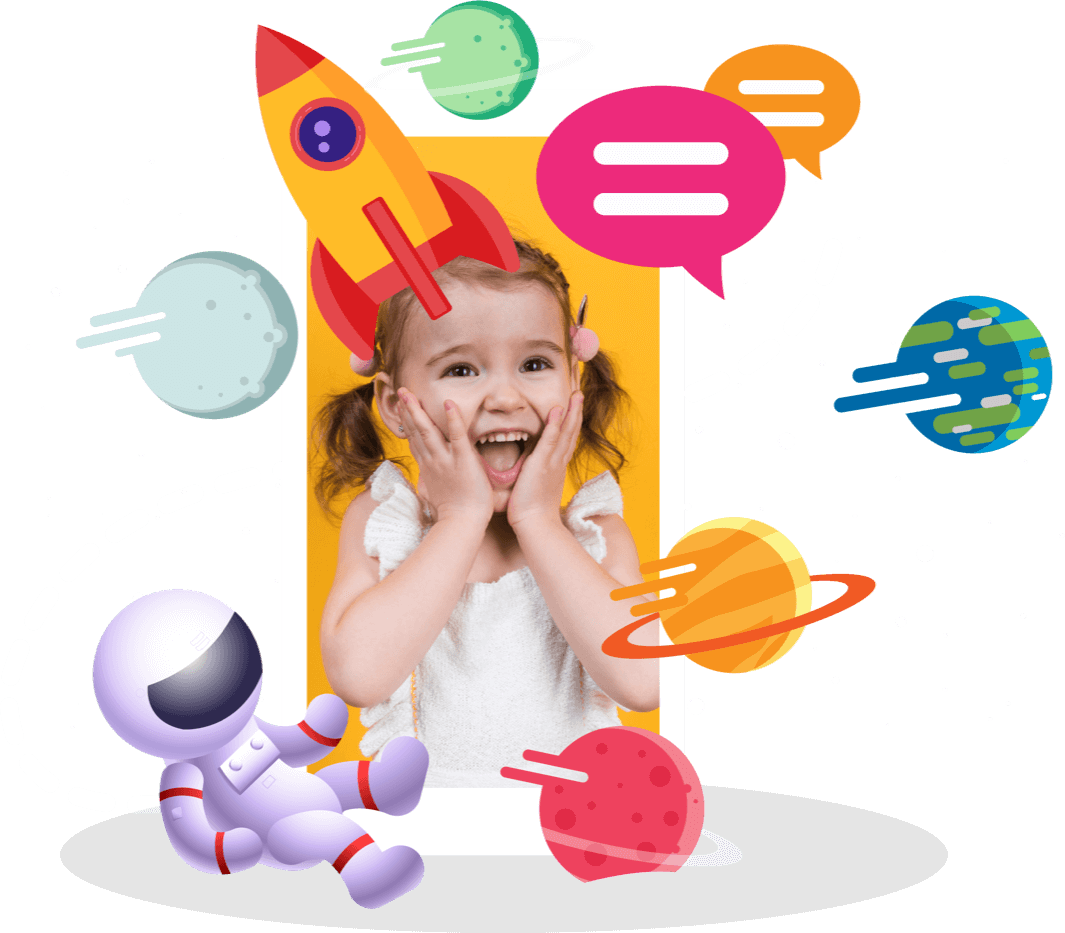Behavioral therapy describes types of therapy that treat mental health disorders. Through this therapy, it is aimed to identify and help change the harmful or unhealthy behaviors.
Behavioral therapy is based on the idea that all behaviors are learned. This means that unhealthy or potentially self-destructive behaviors can be changed.
The therapy focuses on problem behaviors and how to change them into positive ones.
Understanding What Behavioral Therapy Is
There is no cure for autism. However, certain interventions and therapies can be used to manage or even diminish the symptoms.
Typically, behavioral and speech-language therapies are the foundation of the intervention. However, there is no single therapy that works across the board for all children.
Behavioral therapy is still the most proven approach for children with autism.
It is usually the main tool at hand to develop as well as polish social skills.
Figuring out which approach to take can be quite a challenge for parents and caregivers when it comes to behavioral therapy.
Behavior interventions are proven to be both effective and safe. However, it can be costly in the long-term, as well as labor-intensive.
There are also various types of behavioral therapies. Selecting the one that would be most suitable could cause stress.
There is no magic wand to figure out what type of behavioral therapy best matches your child.
Because there is no specific type that works for any individual. Behavioral therapy requires logical planning, flexibility, monitoring, and making adjustments along the way when needed.
There is no measure to determine exactly how much intervention would be beneficial.
However, continuous behavioral therapy has proven to be beneficial for the development and skills of the individual.
What are the Behaviors of Autism?
Individuals with autism have social and communication as well as behavioral differences.
The following are some of the behaviors seen in an individual with autism:
- Unusual or inappropriate body language
- Lack of eye contact
- Lack of interest in others
- Difficulty understanding others’ feelings
- Not liking being touched
- Delayed speech
- Repeating words or phrases without communicative intent
- Repetitive movements like rocking back and forth
- Limited topic of interest
- Tendency to strictly stick to routines
- Being upset due to changes in their routine or environment
- Hyper- or hypo-reactivity to sensory input
- Clumsiness, odd ways of moving
- Being obsessive about unusual objects
Read more: Autism - The Definitive Guide
Behavioral Interventions for Autism
There are various types of behavioral interventions for autism. Sometimes one can be used, while other times a couple can be used together, depending on the need of the individual.
What are the Different and Common Types of Behavioral Therapy?
Applied Behavior Analysis (ABA)
Applied Behavior Analysis is the most-researched and common intervention type for autism. This intervention has been used for over 50 years.
Through ABA, the individual can learn play, communication, self-care and social skills. The highly structured intervention can also help in reducing problematic behaviors.
Studies showed that ABA yields positive outcomes for children with autism. It is usually the starting point for autistic children with symptoms on the severe side.
The therapy can help children learn skills, while also eliminating problem behaviors.
Cognitive Behavioral Therapy (CBT)
Cognitive Behavioral Therapy is another form of BT that has been in use since the 1960s.
Usually children with milder symptoms of autism benefit from this type of therapy. Its aim is to define what triggers the behaviors.
Through the use of CBT, children can learn to see when they are going to exhibit a certain behavior, and they practice doing something different instead of problematic behavior.
This form of therapy helps with fear and anxiety.
Relationship Development Intervention (RDI)
This is a family-centered approach. The aim of RDI is to focus on certain defined emotional and social objectives which are used to establish meaningful relationships.
Aimed more towards the parents, RDI consultants help caregivers develop skills related to interpersonal engagement.
Verbal Behavior Therapy (VBT)
In this type of behavioral therapy, the non-vocal child is taught how to communicate with purpose.
The aim of verbal behavior therapy is to teach children how to use words functionally to get a desired response.
Through repetition, children understand that communication will yield positive results. They will get what they want by using language functionally.
Developmental and Individual Differences Relationship (DIR) Therapy
Also called Floortime, this therapy engages children through activities that they will enjoy. Parents will also participate in the session.
Therapist will help the child work on gaining new skills. During this therapy, the child will be engaging and interacting with others.
How Effective is Behavioral Therapy for Autism?
Applied behavior analysis is considered to be an evidence-based, best practice treatment by the American Psychological Association.
It is the most studied intervention for autism spectrum disorder.
Over 20 studies confirmed that intense and long-term therapy with applied behavior analysis improves outcome for most children with autism.
This means that around 25 to 40 hours a week of therapy for at least 1 to 3 years.
Studies showed improvement in language development, intellectual functioning as well as social functioning and daily life skills.
Similar results were found with adults with autism who received ABA as therapy.
As mentioned, the key to success with ABA therapy is consistency and long-term commitment.
Around 75% of people receiving behavioral therapy experience some benefits. Studies also showed that play therapy is really effective in children ages 3 to 12.
What is the Best Therapy for Autism?
Behavioral therapy is the most researched and proven to be the most effective therapy method. However, not all therapies work the same for each child.
There is no way to specifically determine which type of behavioral therapy would match a child.
What will work for any individual will vary from one individual to another.
As we mentioned before, ABA is the most researched therapy which is determined to be effective in yielding positive results for children with autism.
The best way to determine the approach is to make a logical plan. This behavioral therapy plan should be flexible in terms of monitoring process and adjusted when needed.
There is no study indicating how much intervention is sufficient or best. However, continual behavioral therapy is proven to be beneficial for children with autism.
How Much Behavioral Therapy Does an Autistic Child Need?
There is no specific timeline that will guarantee positive results. No study has established a period of time indicating the time period for children with autism.
However, various studies have confirmed that intense and long-term behavioral therapy yield positive results in many aspects of the child’s skills ranging from language development to social life skills.
Usually 25 to 45 hours a week of therapy for 1 to 3 years have been seen to yield positive results.
Cognitive Behavioral Therapy Activities for Autism
Cognitive behavioral therapy can be used for children with autism who also suffer from other mental health conditions.
This therapy can help with anxiety, depression or ADHD. It is used to modify the behaviors of the child to eliminate the source of negative emotions.
A short-term and problem-focused approach, cognitive behavioral therapy aims to equip children and their caregivers with coping skills that will help them manage difficult challenges.
Here are a few cognitive behavioral therapy activities for autism that will help your child get the skills they need:
-
Cognitive restructuring: This is determining the negative thought patterns. Therapists will ask the child about their thought processes in certain situations to better identify negative patterns. After that, these patterns will be reframed into more positive and productive thoughts.
-
Exposure therapy: This can be used to face fears and phobias of the child. The therapist will guide the child on how to cope with the fear or anxiety while slowly exposing the child to the things that provoke these feelings. This will make the child less vulnerable and more confident in their coping skills.
-
Activity scheduling: Sometimes individuals with autism avoid or put off activities due to fear or anxiety. In this case, it may be helpful to get them on a calendar. This will help them establish a structure and a good routine, making them more likely to follow through with the task.
-
Relaxation techniques: There are some relaxation techniques that can be taught during CBT such as deep breathing exercises, mindfulness, imagery, muscle relaxation, etc. These will help lower the stress of the child when dealing with anxieties and phobias.
-
Role playing: This is another great technique to use when dealing with challenging situations. Playing out scenarios beforehand can help reduce the fear. It can also improve problem solving skills and help the child gain confidence in dealing with certain situations, while also boosting communication skills.
How Does ABA Therapy Work?
There are various phases to applied behavior analysis. These ensure an approach that will fit the needs of your child the best.
The first step is the assessment. Here, the therapist specialized in ABA will ask about the child’s strengths and abilities. They will also inquire about the things that are challenging to the kid.
They will interact with your child and observe their behaviors, communication skills and levels.
This process may include visitations to home or the child’s school to better assess their behavior in a typical setting.
Since therapy will be tailored to the child’s needs, the interventions the therapist may mention could vary.
The next step is developing a plan. Here the therapist will create a formal plan for therapy coming from their consultation and observations.
This plan will aim to address your child’s specific needs, and include concrete treatment goals.
These goals will include reducing or eliminating the problem behaviors and improving or gaining skills like communication.
The plan will also encompass strategies for the caregivers and other parties interacting with the child. This way, everyone will be on the same page about the development of your child.
After developing a tailored plan for the child, the next step is to train the caregiver. This is another crucial step in a successful ABA therapy.
The desired behaviors should be reinforced by the parents and caregivers.
ABA is a continuous project, it should continue outside the time spent with the therapist.
The therapist will be teaching the caregivers and teachers how to reinforce the work done during the therapy.
Frequent evaluation is also another important segment in ABA therapies. The aim here is to determine the causes of behaviors and help the child change or improve them.
The approach determined early on may be modified by the therapist depending on the progress of the child.
Monitoring and analysis of the progress is important in terms of making sure that the therapy is aimed to improve the child’s progress.
The strategies adopted may be changed or modified along the way to better fit the needs of the child.
Is ABA Effective for Autism?
As we discussed in this article previously, ABA is established by various research to be effective in the development of children with autism.
This type of therapy works on specific problem behaviors of the child, helping them eliminate or improve such behaviors and achieve a positive outcome in terms of developing new and beneficial skills in life.
Why is ABA So Controversial?
ABA has been in use for many many years. There has been some controversy around the topic in the past.
However, much of this controversy was related to the way ABA was used to be done back in the day.
Therapy needs to be continuous and long-term. In the past decades, the ABA therapy involved around 40 hours of therapy every week.
A big portion of this time was spent completing tasks while sitting at a desk, and punishment was used often so as to address problem behaviors.
There was not a lot of awareness back then so the focus and emphasis of the therapy was used to make the child more “normal” or neurotypical.
We are now more aware of neurodiversity, and know that the human brain can function in diverse ways.
In this light, treatment for autism spectrum disorder also shifted from trying to “fix” the individual to help them achieve a more comfortable life by equipping them with the skills they need in life.
Today, ABA therapy focuses on modifying behaviors that cause challenges in the child’s life.
It helps them develop skills and strengths they need to have an independent life. Punishment is __not __ used.
What is it Like Being an ABA Therapist?
Based on the accounts of ABA therapists, this line of work is challenging but deeply rewarding.
It is an interesting job as ABA therapists get to work with many children. Seeing them overcome their challenges in time is really rewarding to ABA therapists.
Some really like observing the progress even if it is in baby steps.
Some ABA therapists state that the job is not for everyone. Although they mainly work with children, they have to go between being funny, playful and silly with the kids in front of the adults.
They also need to have a deep knowledge in behavior and behavioral theories.
It is a challenging task. The ABA therapists must be patient and quick problem solvers, pay attention to details in behaviors and the environment.
Children could be really rough when they are upset or throwing tantrums, so ABA therapists should be prepared for that.
ABA therapists learn about autism and autism culture with every single child they attend to.
They will collect data and analyse them, work on the specific program at hand and adjust it if need be.
They also work with parents to make sure that positive behaviors are reinforced even after the session.
Being an ABA therapist is definitely not an easy task. There are a lot of challenges that come along with the work, and the needs of each child is unique.
They should be able to adapt and be patient. People who love doing this state that they make meaningful connections every day, and can reflect on themselves as well.
Would You Recommend ABA for Someone with Autism?
At the end of the day, this decision really depends on the child’s needs and the opinion of the professionals.
ABA has been proven to be successful with intense and long-term therapies for children with autism.
Combined with other types of therapies like Speech and Language Therapy as well as Play Therapy, the child’s life could really improve in terms of being independent and having a comfortable life.
Caregivers and parents state that ABA has been notably helpful.
It is important to consult your child’s primary healthcare provider to get a referral, or directly look for a professional therapist specialized in ABA to better understand if ABA would be beneficial in your specific case.
Autism spectrum does not need “fixing” or “eliminating” as has been thought for many years, but treatment options like ABA therapy could help increase the quality of life for your child.
Come along with 200k+ families!
Let's communicate better!
Download for Free.
What Other Therapies are There for Autism?
In addition to ABA, there are other methods used as therapy for children with autism spectrum disorder. Here are some reported by the parents to be useful for their kids:
Occupational Therapy: It helps individuals with their physical, cognitive, social, and motor skills. The aim is to improve everyday skills of people with autism to help them become more independent.
Speech Therapy: It is performed by speech-language pathologists where they assess and treat communication problems and speech disorders, an area individuals with autism have challenges. It aims to improve communication, articulation, and fluency.
Social Skills Training: Social skills training is the early-intervention behavioral treatments. These are designed to encourage and boost correct behavioral development. It teaches children with autism about recognition and application of normal social skills through a reward system.
Hippotherapy: This form of therapy is a physical, occupational and speech therapy combined where the therapist uses the characteristic movements of a horse to provide motor and sensory input that is carefully graded. It helps improve neurological function as well as sensory processing.
Psychiatrist/Psychologist Sessions: Verbal people on the spectrum can benefit from psychotherapy as a tool to manage symptoms like anxiety or compulsions. Therapeutic interventions are used to improve psychological functioning of the individual through behavioral means. Some of the areas of psychology that are helpful for autistic people are as follows:
- Drama therapy
- Educational psychology
- Play therapy
- Family psychology
Smart Device Applications: There are various types of smartphone and tablet applications that target various aspects of autism spectrum disorder. These range from math skills apps to routine establishing apps, and they can provide the help the child needs in a fun way.





